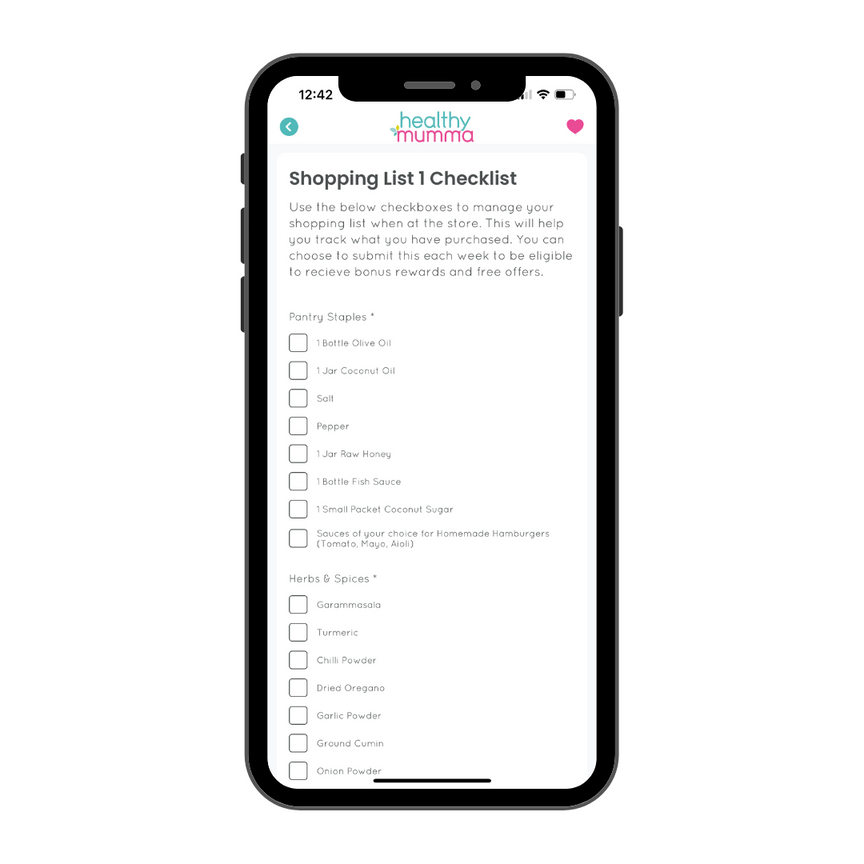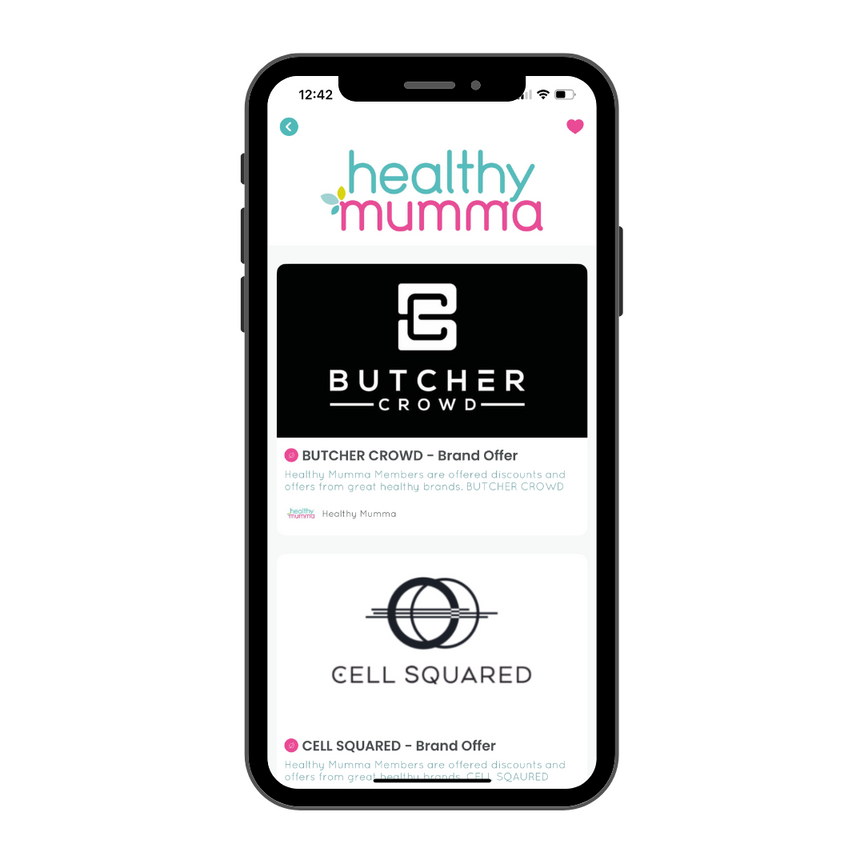
Organised.
Recipes.
Meal Plans.
Shopping Lists.
$4.99 per week*
Cancel Anytime.


Easy-to-Cook Healthy Recipes
- Delicious, easy to follow meal recipes
- Video and written simple Instructions
- Healthy Meals have never been so easy!


Dinner Meal Planning
- All your weekly dinner meals planned and organised in one place
- Follow our 7-day dinner meal plans OR choose your own meal options


Shopping Lists Included
- Shopping Lists updated weekly
- Weekly education on best healthy ingredients and products to buy for each meal
- Simple swap options to keep your family healthy


Discount
Brand Offers
- Access exclusive discounts from our range of healthy brand partners
- Healthy Meals have never been so easy!

Contact
Join our Community of
Healthy Mumma’s
Free Newsletter
The Trustee for Leask Holdings Trust trading as Healthy Mumma
THE MATERIAL CONTAINED IN THE HEALTHY MUMMA APP & WEBSITE IS FOR GENERAL INFORMATION PURPOSES AND DOES NOT CONSTITUTE SPECIFIC, PERSONAL, MEDICAL OR NUTRITIONAL ADVICE.